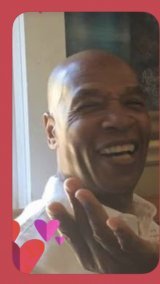Analysis of Laozi’s Dao De Jing
[Dao is The Way.
path to the awakening
of our true nature;
the opposites united,
In harmony and balance.]
Master Laozi,
‘Philosopher of Ages,’
author of the Dao De Jing,
You are a quantum wonder,
not erased by time or space.
Your proclamations
on The Art of Harmony,
on The Way of Life,
remain a classic;
and there is no counterpart.
From the Book of Odes,
sages have cited your work.
Most famous, Zhuangzi;
likewise, by Confucius,
in his Analects treatise.
Then came Mohism,
a moralist school of teaching.
A dialectic…
and Confucian contrast;
to offset Dao De Jing.
Despite intrusions,
Daoism stands its ground
as a principle.
Laozi’s hallmark is robust;
distinguished by its presence.
Dao is a guide
that offers us instructions.
It is a teaching
concerning The Way of Life;
a teaching without judgments.
As a behavior,
the Dao has two phases …
Complementary:
The first — that we make choices.
The second — our discernment.
Interpretation
requires understanding.
for moral guidance;
yet, surpassing even that,
requires selective choice.
As a ‘road’ or ‘path,’
Dao offers us wisdom.
It is a gateway
that’s multidimensional;
with us as the choice makers.
Dao is cosmic,
an existential wonder;
and ever constant.
It is nature’s Way of Life;
encompassing opposites.
[Dao is The Way,
path to the awakening
of our true nature;
the opposites united,
In harmony and balance.]
| Scheme | ABCDE efbcx ghijx xxekk lbjxb gxmxe xgbix cfhfn xbexx xlamx jcnix ABCDE |
|---|---|
| Poetic Form | Etheree (27%) Tetractys (22%) |
| Metre | 1101 1100100 110110 0100010 0100010 101 0100110 1010111 1101010 1011111 1010 1011100 10111 01010 011110 10111 1011011 1101 11010 01110 111 01001110 0010 001010 101111 01010 1111 10100 11101 0101110 1101 1101010 11010 0100111 0100110 10010 011110 010 0111110 01010010 0010 010010 11010 1010101 0100101 10111 110110 1101 11 1110110 1110 11010 01010 1110111 0100100 1101 1100100 110110 0100010 0100010 |
| Closest metre | Iambic trimeter |
| Characters | 1,412 |
| Words | 294 |
| Sentences | 22 |
| Stanzas | 12 |
| Stanza Lengths | 5, 5, 5, 5, 5, 5, 5, 5, 5, 5, 5, 5 |
| Lines Amount | 60 |
| Letters per line (avg) | 18 |
| Words per line (avg) | 4 |
| Letters per stanza (avg) | 90 |
| Words per stanza (avg) | 19 |
About this poem
A mythical or historical Chinese philosopher attributed as founder of Daoism, Laozi (circa 604 BC-531 BC) is considered to be the author of the Dao De Jing. Dao De Jing as a philosophy of life-force; of energy, or chi, both potential and kinetic, is regarded as nature’s Way of Life that, in its essence, encompasses all opposites. See my other online Tao poems on poetry.com entitled “DAO of Psyche,” “The TAO of E Pluribus Unum,” “The TAO of Direction,” “TAO Has no Scale,” “In TAO,” “Wisdom of DAO,” “Wisdom of TAO Te Ching,” “The Silent Wisdom of DAO,” “How Does The TAO See,” and “The Way of TAO is The Way of Spirit. ” See also the related poem Taoist poem entitled “The Essence of the Noumenon,” and the ‘nativist Tao poem’ entitled “We Are All Aborigines.” All of these poems treat the subject of both Tao (lowercase) and TAO (uppercase) as embracing the phenomenon of balance and harmony in the universe. TAO, or ‘The Way of Life’ makes observations of and asserts that there is an integral and even harmonious relationship of opposites, of Yin and Yang in nature. TAO celebrates the oneness of all existence, typically masked by the foibles and misapprehension of human perception that consider TAO superficially as being that of random multiplicity of the “1000 things.” Such a perspective often engenders friction, rivalries, conflict, and division in human societies and in human civilizations. Instead, TAO or DAO at its innermost core, celebrates the integral union and unity of universal ONENESS; of E Pluribus Unum as the unrealized divine, prescribed, existential underlying order of life presented to humanity in all its manifested complexities. In short, The Tao that is made manifest is not the TAO. Similarly, Kinetic energy is not potential energy. Likewise, The archetypal image is not the archetype itself. The multiple parts themselves are constituents of the whole, but are not the whole. Stated bluntly, “to be” is not the same as “to become.” The former is ‘kinetic.’ The latter is ‘potential.’ TAO is undivided. To be in TAO is to be undivided, to be in the state of an ‘uncarved block.’ To be in TAO is to become, in theological terms, ‘sanctified’ or ‘made whole.’ TAO as ultimate puzzle, is the conjunctive mystical union of Yin-Yang and of Being-Becoming. more »
Written on February 08, 2023
Submitted by karlcfolkes on February 08, 2023
Modified by karlcfolkes on March 02, 2023
- 1:28 min read
- 585 Views
Citation
Use the citation below to add this poem analysis to your bibliography:
Style:MLAChicagoAPA
"Laozi’s Dao De Jing" Poetry.com. STANDS4 LLC, 2024. Web. 25 Apr. 2024. <https://www.poetry.com/poem-analysis/151127/laozi%E2%80%99s-dao-de-jing>.


Discuss this Karl Constantine FOLKES poem analysis with the community:
Report Comment
We're doing our best to make sure our content is useful, accurate and safe.
If by any chance you spot an inappropriate comment while navigating through our website please use this form to let us know, and we'll take care of it shortly.
Attachment
You need to be logged in to favorite.
Log In